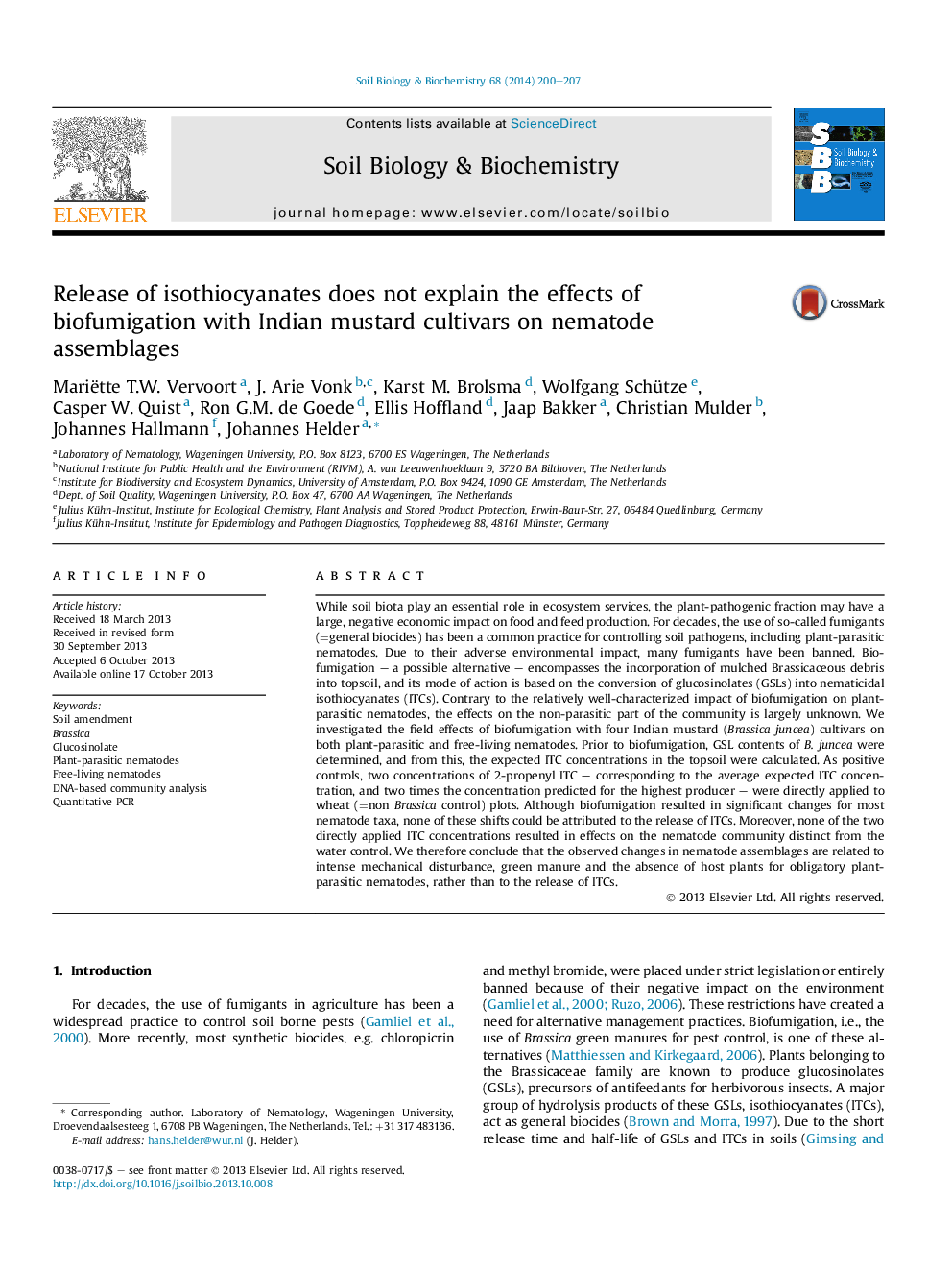| کد مقاله | کد نشریه | سال انتشار | مقاله انگلیسی | نسخه تمام متن |
|---|---|---|---|---|
| 8365056 | 1542616 | 2014 | 8 صفحه PDF | دانلود رایگان |
عنوان انگلیسی مقاله ISI
Release of isothiocyanates does not explain the effects of biofumigation with Indian mustard cultivars on nematode assemblages
ترجمه فارسی عنوان
انتشار ایزوتوسیانات ها اثرات بیوفومیری با ارقام خردل هند را بر روی مجموعه های نماتد توضیح نمی دهد
دانلود مقاله + سفارش ترجمه
دانلود مقاله ISI انگلیسی
رایگان برای ایرانیان
کلمات کلیدی
موضوعات مرتبط
علوم زیستی و بیوفناوری
علوم کشاورزی و بیولوژیک
دانش خاک شناسی
چکیده انگلیسی
While soil biota play an essential role in ecosystem services, the plant-pathogenic fraction may have a large, negative economic impact on food and feed production. For decades, the use of so-called fumigants (=general biocides) has been a common practice for controlling soil pathogens, including plant-parasitic nematodes. Due to their adverse environmental impact, many fumigants have been banned. Biofumigation - a possible alternative - encompasses the incorporation of mulched Brassicaceous debris into topsoil, and its mode of action is based on the conversion of glucosinolates (GSLs) into nematicidal isothiocyanates (ITCs). Contrary to the relatively well-characterized impact of biofumigation on plant-parasitic nematodes, the effects on the non-parasitic part of the community is largely unknown. We investigated the field effects of biofumigation with four Indian mustard (Brassica juncea) cultivars on both plant-parasitic and free-living nematodes. Prior to biofumigation, GSL contents of B. juncea were determined, and from this, the expected ITC concentrations in the topsoil were calculated. As positive controls, two concentrations of 2-propenyl ITC - corresponding to the average expected ITC concentration, and two times the concentration predicted for the highest producer - were directly applied to wheat (=non Brassica control) plots. Although biofumigation resulted in significant changes for most nematode taxa, none of these shifts could be attributed to the release of ITCs. Moreover, none of the two directly applied ITC concentrations resulted in effects on the nematode community distinct from the water control. We therefore conclude that the observed changes in nematode assemblages are related to intense mechanical disturbance, green manure and the absence of host plants for obligatory plant-parasitic nematodes, rather than to the release of ITCs.
ناشر
Database: Elsevier - ScienceDirect (ساینس دایرکت)
Journal: Soil Biology and Biochemistry - Volume 68, January 2014, Pages 200-207
Journal: Soil Biology and Biochemistry - Volume 68, January 2014, Pages 200-207
نویسندگان
Mariëtte T.W. Vervoort, J. Arie Vonk, Karst M. Brolsma, Wolfgang Schütze, Casper W. Quist, Ron G.M. de Goede, Ellis Hoffland, Jaap Bakker, Christian Mulder, Johannes Hallmann, Johannes Helder,
